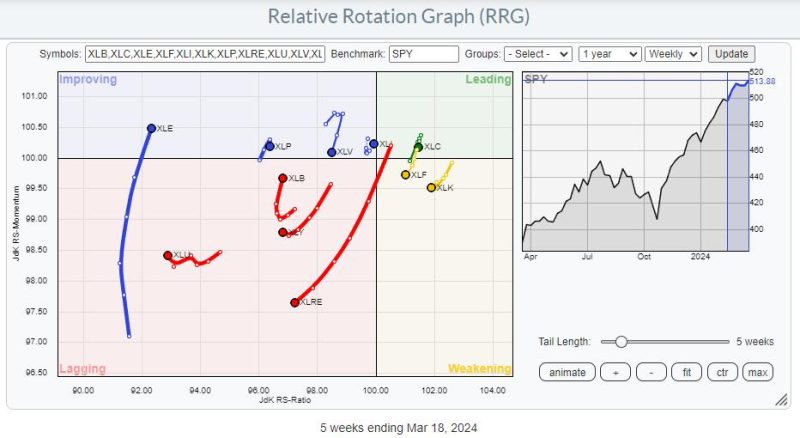Energy: A Long-Term Turnaround in Relative Strength is Brewing
The global energy sector has long been one of the most vital components of the economy, providing the fuel that drives industries, powers homes, and enables transportation. Over the years, the energy sector has seen its fair share of ups and downs, influenced by a myriad of factors ranging from geopolitical tensions to technological advancements. In recent times, the sector has been grappling with a complex web of challenges, including fluctuating oil prices, the rise of renewable energy sources, and the global shift towards sustainability.
However, despite these challenges, there are signs that a long-term turnaround in relative strength is brewing within the energy sector. One key factor driving this potential turnaround is the increasing focus on renewable energy sources such as solar, wind, and hydroelectric power. As concerns about climate change grow and governments around the world commit to reducing carbon emissions, renewables have emerged as a viable and sustainable alternative to traditional fossil fuels.
Investment in renewable energy projects has been on the rise, supported by government incentives and the declining cost of renewable technologies. This shift towards renewables not only aligns with environmental goals but also presents a significant opportunity for companies operating in the sector to diversify their portfolios and tap into a growing market. As renewable energy becomes increasingly mainstream, traditional energy companies are adapting their strategies to incorporate more sustainable practices and technologies, positioning themselves for long-term growth and resilience.
Furthermore, advancements in energy storage technologies are opening up new possibilities for renewable energy integration, addressing the intermittency issue that has long been a challenge for renewables. Energy storage solutions such as batteries are becoming more cost-effective and efficient, enabling a more reliable and stable grid powered by renewable sources. This development is crucial in accelerating the transition towards a low-carbon energy system and reducing the reliance on fossil fuels.
Another driver of the potential turnaround in the energy sector is the increasing demand for electric vehicles (EVs). As countries set ambitious targets to phase out internal combustion engine vehicles in favor of electric alternatives, the demand for EVs is expected to soar in the coming years. This shift towards electric mobility is not only driven by environmental concerns but also by the lower operating costs and improved performance of EVs compared to traditional vehicles.
The growing adoption of EVs presents a significant opportunity for the energy sector, particularly in terms of infrastructure development and energy storage solutions. Charging infrastructures will need to be expanded to support the increasing number of EVs on the road, creating new revenue streams for energy companies. Additionally, EV batteries can be repurposed for energy storage, further enhancing the integration of renewable energy sources into the grid.
In conclusion, while the energy sector faces numerous challenges, including the volatility of oil prices and the need to transition to a more sustainable model, there are promising signs of a long-term turnaround in relative strength. The increasing focus on renewable energy, advancements in energy storage technologies, and the growing demand for electric vehicles are reshaping the sector and presenting new opportunities for companies to thrive in a rapidly evolving market. By embracing innovation, sustainability, and diversification, energy companies can position themselves for success in a changing landscape where clean energy and efficiency are paramount.
